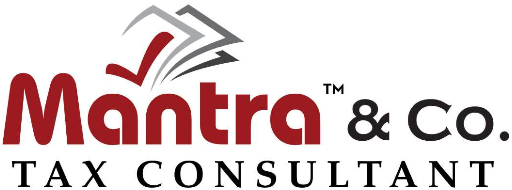Delivering Trustworthy and Practical Tax Consulting Services
Import-Export Code (IEC) Registration
(2176 Ratings) Top Service Provider in Gujarat and Maharashtra
- The Import-Export Code (IEC) is an essential requirement for businesses involved in international trade. This 10-digit code, issued by the Directorate General of Foreign Trade (DGFT), facilitates import and export activities.
Comprehensive Guide to Import-Export Code (IEC) Registration
The Import-Export Code (IEC) is an essential requirement for businesses involved in international trade. This 10-digit code, issued by the Directorate General of Foreign Trade (DGFT), facilitates import and export activities. Whether you’re a budding entrepreneur or an established business, obtaining an IEC is the first step toward global expansion.
This detailed guide covers all aspects of IEC registration, its benefits, application process, and compliance requirements.
What is an Import-Export Code (IEC)?
IEC is a business identification number required to conduct international trade in India. It is mandatory for customs clearance, foreign exchange transactions, and availing export-related benefits. The code is a one-time registration and is valid for a lifetime.
Why is IEC Registration Important?
| Benefits | Explanation |
|---|---|
| Legal Authorization | Enables businesses to legally import or export goods and services. |
| Customs Clearance | Required for clearing shipments at customs. |
| Bank Transactions | Necessary for conducting foreign exchange transactions. |
| Government Incentives | Avail export promotion benefits under schemes like MEIS and SEIS. |
| Global Market Access | Facilitates business expansion into international markets. |
Who Needs an IEC?
IEC is mandatory for:
- Importers: To clear shipments and make payments to foreign suppliers.
- Exporters: To send shipments and receive payments from foreign clients.
- Service Providers: Engaged in exporting services and earning foreign currency.
- Online Sellers: Selling products internationally on platforms like Amazon or eBay.
Exemptions:
IEC is not required for:
- Import/export by government departments.
- Non-commercial trade for personal use.
- Certain categories covered under special government policies.
Documents Required for IEC Registration
| Document | Purpose |
|---|---|
| PAN Card | Business or individual identification. |
| Aadhaar Card/Passport/Voter ID | Identity proof for proprietors. |
| Business Registration Certificate | Proof of business establishment. |
| Address Proof | Utility bills, lease agreement, or property ownership documents. |
| Bank Account Proof | Cancelled cheque or a bank certificate. |
| Digital Signature Certificate (DSC) | For secure online submission (optional but recommended). |
Eligibility Criteria for IEC Registration
To apply for IEC:
- The applicant must have a valid PAN card.
- The business must have an operational bank account.
- The address proof for the business must be available.
Step-by-Step Process for IEC Registration
Step 1: Visit the DGFT Portal
- Go to the official DGFT website.
- Register as a user by providing basic details and verifying via OTP.
Step 2: Fill Out the Application Form
- Log in to your account and navigate to the “Apply for IEC” option.
- Enter details like PAN, business name, address, and bank information.
Step 3: Upload Documents
Upload scanned copies of the required documents in the prescribed formats (PDF or JPEG).
Step 4: Pay the Application Fee
- The registration fee is ₹500.
- Payment can be made through net banking, credit/debit cards, or UPI.
Step 5: Submit the Application
Review all the entered details and documents before final submission.
Step 6: Receive IEC Code
Once approved, you will receive the IEC code via email. The process typically takes 1-3 business days.
Cost of IEC Registration
| Expense | Amount |
|---|---|
| Application Fee | ₹500 |
| Professional Services (if applicable) | ₹1,500 – ₹3,000 |
| DSC (if required) | ₹1,500 – ₹3,000 |
Compliance and Annual Updates
While IEC has lifetime validity, it is mandatory to update the details annually between April and June. Failure to update may lead to deactivation of the IEC code.
Amendments to IEC
Businesses can update the following details via the DGFT portal:
- Address or contact details.
- Change in directors or partners.
- Modification of bank account details.
Common Errors in IEC Application and Solutions
| Error | Solution |
|---|---|
| Incorrect PAN Details | Verify and update PAN information on the Income Tax website. |
| Invalid Bank Details | Ensure the business name matches with the bank records. |
| Document Format Issues | Upload documents in the correct format and size as specified. |
| Incomplete Application | Double-check the application form before submission. |
Benefits of IEC for Businesses
| Benefit | Impact |
|---|---|
| Facilitates Global Trade | Legal authorization for import and export activities. |
| Avails Export Benefits | Access to government schemes like MEIS and SEIS. |
| Streamlines Operations | Required for customs clearance and banking processes. |
| Supports Expansion | Enables businesses to enter international markets. |
Integration with Other Registrations
| Registration | Purpose |
|---|---|
| GST Registration | Compliance for domestic and international trade. |
| RBI Approvals | For currency exchange compliance. |
| ICEGATE | Facilitates electronic customs documentation. |
Role of Consultants in IEC Registration
Professional consultants can assist in:
- Preparing and verifying documents.
- Submitting applications accurately.
- Addressing objections raised by DGFT.
While hiring a consultant is optional, it can save time and ensure hassle-free registration.
Conclusion
IEC registration is a vital step for businesses aspiring to enter international markets. It simplifies trade operations, ensures compliance with government norms, and provides access to export benefits. By understanding the application process and adhering to compliance requirements, businesses can unlock new opportunities and contribute to India’s growing international trade ecosystem.
Note: Always keep your IEC updated and ensure compliance with DGFT notifications to avoid penalties or deactivation.
